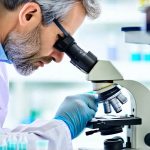The kidneys, often underestimated in daily wellness routines, play a pivotal role in maintaining overall health. Beyond their well-known function of filtering waste from the body, they are deeply integrated into Traditional Chinese Medicine (TCM) as central to our vital life force – or ‘Qi’. In TCM philosophy, kidney energy isn’t just about physical filtration; it governs deep reserves of stamina, courage, willpower, and even reproductive health. When kidney energy is depleted, individuals may experience fatigue, lower back pain, frequent urination, feelings of fear or anxiety, and a diminished sense of drive. Supporting kidney function through lifestyle choices, diet, and specific techniques like acupressure can be profoundly beneficial for holistic wellbeing.
This article explores the fascinating connection between massage points located behind the knees – specifically targeting areas related to the Kidney meridian in TCM – and their potential role in gently boosting renal energy. It’s important to state upfront that this is based on traditional practices and should not be considered a substitute for professional medical advice or treatment. Instead, it offers insights into complementary techniques that may support your overall health alongside conventional care. We will delve into the rationale behind these points, how to locate them effectively, and provide guidance on safe and comfortable massage techniques.
Understanding Kidney Energy & The Popliteal Space
The concept of ‘kidney energy’ in TCM is nuanced. It’s not simply about the physical organ itself but encompasses a complex web of functions related to yin and yang, water element associations, and its influence on other organs. A deficiency in kidney yin manifests as dryness, overheating, or restlessness, while a deficiency in kidney yang appears as coldness, fatigue, and lack of motivation. The kidneys are considered the foundation of our life force, storing essential energy that fuels growth, reproduction, and long-term health. This is why maintaining their energetic balance is crucial for sustained vitality. Consider incorporating gentle morning routines to support this vital function.
The space behind the knees – known medically as the popliteal fossa – holds significant importance in TCM. It’s a convergence point for several key meridian lines, including the Kidney meridian, which begins on the soles of the feet and runs up the inner leg, passing through the popliteal space before continuing upwards. The Kidney meridian is closely linked to bladder meridian too, creating an energetic relationship that affects urinary function and overall fluid balance. This location makes it an ideal target for acupressure and massage aimed at stimulating kidney energy flow. Gentle pressure on these points can help unblock stagnation, promote circulation, and encourage the smooth movement of Qi through the meridian pathways.
The popliteal space is also rich in blood vessels and nerves. While we are focusing on the energetic aspects aligned with TCM, gentle massage here can improve local circulation and potentially relieve muscle tension, contributing to a sense of wellbeing. It’s crucial to approach this area with respect and gentleness, avoiding deep pressure that could irritate these sensitive structures.
Locating The Key Massage Points
Identifying the correct points is essential for achieving desired results. There are several key areas within the popliteal space to focus on. One primary point is Kidney 27 (Kid 27), also known as Weizhong. This point is located in the depression between the medial end of the patella and the lateral condyle of the femur – essentially, a little below the knee crease when the leg is slightly bent. It feels like a small indentation when pressed. Another important area lies along the Kidney meridian itself, which runs approximately 1-2 inches above the back of the knee joint, following the hamstring muscles.
To find these points accurately: – Sit comfortably with your legs extended or gently bent. – Use your fingertips to palpate (feel) around the popliteal space, searching for tender spots or indentations. – A slight bend in the knee often makes it easier to locate Kid 27. – Focus on areas where you feel a distinct change in texture or sensation.
It’s important to note that anatomical variations exist; therefore, precise point location can differ slightly between individuals. The goal is not necessarily pinpoint accuracy but rather stimulating the general area associated with kidney energy flow. Remember: gentle exploration and listening to your body are key. Avoid applying excessive pressure, especially if you experience any pain or discomfort.
Massage Techniques for Renal Energy Support
Once you’ve located the points, gentle massage techniques can be applied. Begin by warming up the area with light effleurage – long, sweeping strokes along the back of the leg and around the knee joint. This helps to increase circulation and prepare the tissues for deeper work. Then, use your thumbs or fingertips to apply small, circular motions directly on Kid 27 and along the Kidney meridian line.
- Apply moderate pressure, enough to feel a sensation but not cause pain. – Massage in a clockwise direction around Kid 27. – Spend approximately 2-3 minutes on each leg, focusing on areas that feel particularly tense or tender. – Breathe deeply throughout the massage, allowing your breath to guide your movements and promote relaxation.
It’s beneficial to combine massage with mindful intention. Visualize energy flowing freely through your kidneys and legs as you apply pressure. This can help amplify the energetic effects of the massage. Avoid massaging directly over varicose veins or inflamed areas. If you have a history of deep vein thrombosis (DVT) or other circulatory issues, consult with your healthcare provider before trying this technique.
Incorporating Massage Into Your Routine & Precautions
Consistency is key when it comes to supporting kidney energy. Integrating these massage techniques into your daily or weekly routine can yield the best results. Consider incorporating a short 5-10 minute session while you’re relaxing, watching TV, or before bed. You can also combine this with other self-care practices like yoga, meditation, and mindful breathing exercises to further enhance overall wellbeing. To complement these efforts, explore specific dietary choices known to support renal health.
Important Precautions: – If you are pregnant, consult with your healthcare provider before trying any new massage techniques. – Avoid massaging if you have acute injuries, infections, or open wounds in the area. – Listen to your body and stop immediately if you experience any pain or discomfort. – This information is not a substitute for professional medical advice. Always consult with a qualified healthcare practitioner for any health concerns. – Never self-diagnose.
– People with kidney disease should discuss this practice with their nephrologist before attempting it. While intended to be gentle support, it’s crucial to avoid any potential interference with existing treatment plans. Understanding how energy impacts renal function is also key.
Remember that maintaining overall health is essential, and regular checkups are important for early detection of any potential issues. If you’re concerned about kidney health, it’s always best to seek professional diagnostic evaluation.
For those interested in a holistic approach, consider integrating these techniques with other TCM practices like balancing energy and stillness for optimal wellbeing. Furthermore, exploring body listening practices can enhance your awareness of renal tension and promote self-care.





















